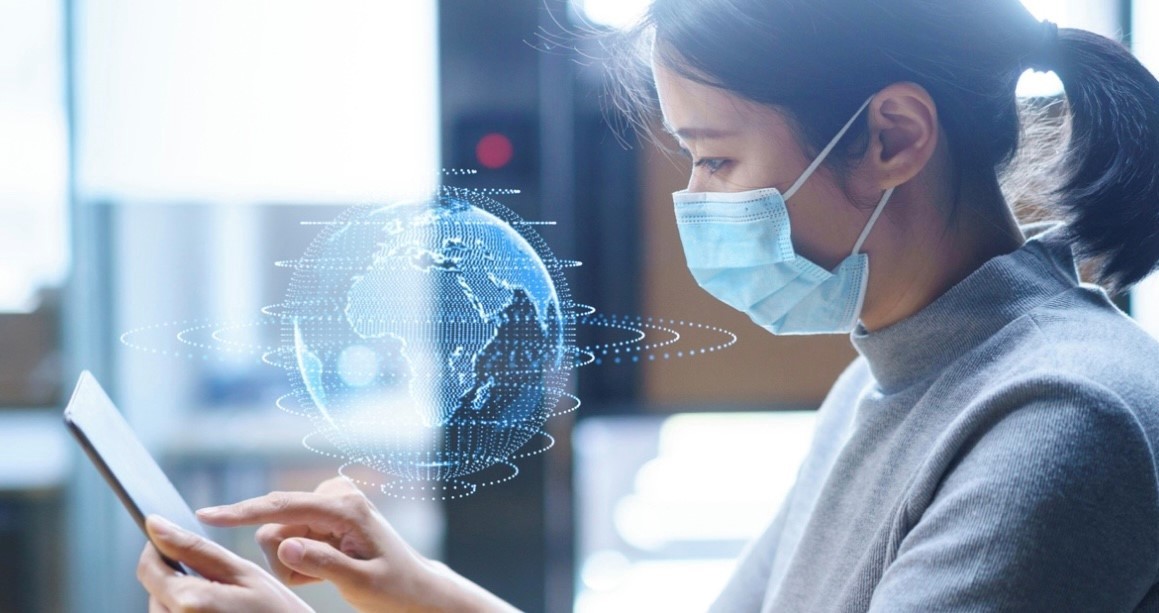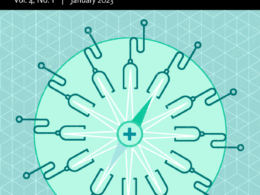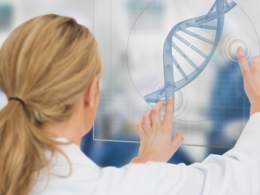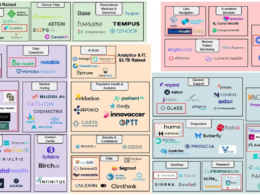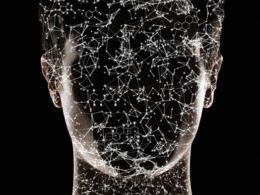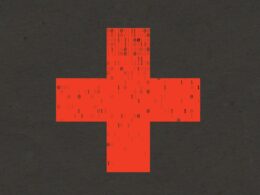This is a republication of the article below, with the title above, to highlight the message in question.
The Healthcare Workforce of the Future
Mathias Goyen, Prof. Dr.med.
Chief Medical Officer EMEA at GE Healthcare
Linkedin
July 25, 2022
Key messages summarized by:
Joaquim Cardoso MSc.
health transformation — research and advisory institute
AI health care unit
July 25, 2022
- Prediction #1: Burnout prevention innovations will continue
- Prediction #2: Clinicians will sort out the AI wheat from the chaff
- Prediction #3: Technology will assist workers in reducing healthcare disparities
- Prediction #4: Telemedicine will play a bigger role in how healthcare is delivered
- Prediction #5: The Delivery of Healthcare Will Be Revolutionized by Precision Health
ORIGINAL PUBLICATION (full version)

The Healthcare Workforce of the Future
Mathias Goyen, Prof. Dr.med.
Chief Medical Officer EMEA at GE Healthcare
Linkedin
July 25, 2022
Healthcare professionals around the world are facing difficult times.
The emotional, physical, and mental stress on a workforce that was already expressing fatigue prior to the pandemic has further increased as a result of COVID-19.
The system is beginning to fall apart: While the demand for healthcare personnel is expected to rise in the coming years, they are currently retiring at a quicker rate than expected.
But new technology is coming to the aid of the world’s overworked medical professionals, nurses, and support workers.
Clinicians are increasingly using artificial intelligence (AI), which collects and analyzes vast amounts of data before producing useful insights, to reduce their workload.
For instance, AI-enhanced software can assist shorten the number of steps needed to image a patient, quickly spot problems in a scan, and control the flow of patients to an emergency room.
Clinicians may now concentrate on their primary duties, which include patient diagnosis and treatment.
Despite the potential of AI, the sector will need to integrate the technology cautiously in order to avoid burdening their employees and escalating burnout.
Despite the potential of AI, the sector will need to integrate the technology cautiously in order to avoid burdening their employees and escalating burnout.
I describe how, when used properly, AI can relieve the pressure on the world’s overworked healthcare workforce.
- Prediction #1: Burnout prevention innovations will continue
- Prediction #2: Clinicians will sort out the AI wheat from the chaff
- Prediction #3: Technology will assist workers in reducing healthcare disparities
- Prediction #4: Telemedicine will play a bigger role in how healthcare is delivered
- Prediction #5: The Delivery of Healthcare Will Be Revolutionized by Precision Health

Prediction #1: Burnout prevention innovations will continue
The fact that the world’s physicians are in crisis is widely known.
Over one-fourth of radiologists, as well as over half of all critical care doctors, neurologists, and cardiologists, report feeling burned out.
It’s also a persistent problem: Nearly 8 out of 10 people who responded to the same study claimed they had burnout prior to the COVID-19 pandemic [1].
Many physicians attribute their stress and exhaustion to their heavy workload [2] which includes contacting, organizing, and following up with patients regarding their appointments and health issues.

Prediction #2: Clinicians will sort out the AI wheat from the chaff
The epidemic has made these issues worse as clinicians deal with an inflow of COVID-19 patients and the deteriorating health of patients who have put off regular checkups for several months.
However, there is some positive news to report.
The ability of algorithms to collect, evaluate, and produce a multitude of useful clinical insights from these data avalanches will continue to be improved by technologists and data scientists.
This could lead to better healthcare, a more equitable division of the workload, and a lower chance of burnout.
By eliminating many of their repetitious activities and lightening their cognitive burden, our AI helps clinicians focus on the actual task at hand.
The application of algorithms … could lead to better healthcare, a more equitable division of the workload, and a lower chance of burnout.

Prediction #3: Technology will assist workers in reducing healthcare disparities
The US’s health disparities were brought to light by COVID-19.
According to data gathered by the University of Minnesota, American Indians and Alaska Natives, together with Black and Hispanic Americans, had greater hospitalization rates for COVID-19 than white Americans do [4].
In contrast, figures from the Centers for Disease Control and Prevention (CDC) suggest that Americans who live in rural areas had a higher risk of dying from heart disease, cancer, unintentional injury, chronic lower respiratory disease, and stroke [5].
But to help close these gaps, clinicians will increasingly use technology like mobile devices, remote monitoring tools, and telehealth.

Prediction #4: Telemedicine will play a bigger role in how healthcare is delivered
The COVID-19 pandemic accelerated the global uptake of telemedicine, making it nearly instantly commonplace after it had previously been underutilized.
Hospitals will continue to use this dependable and affordable technology to provide care.
The delivery and quality of care can be greatly improved by using remote monitoring systems and remote clinical training to maximize the possibilities of equipment.
The delivery and quality of care can be greatly improved by using remote monitoring systems and remote clinical training to maximize the possibilities of equipment.
Because of the severe lack of ICU intensivists, the problems with data integrity in the industry, and the interoperability of many conventional ICU monitoring systems, there is a significant opportunity in the field of critical care.
Because of the severe lack of ICU intensivists, the problems with data integrity in the industry, and the interoperability of many conventional ICU monitoring systems, there is a significant opportunity in the field of critical care

Prediction #5: The Delivery of Healthcare Will Be Revolutionized by Precision Health
For many years, there was a one-size-fits-all approach to treating a variety of illnesses and genetic problems.
Patients with cancer typically undergo surgery to remove a tumor, followed by multiple cycles of chemotherapy or radiation to eradicate the cancer.
But today, treating cancer patients without taking into consideration their unique genes and type of disease is practically unimaginable.
But today, treating cancer patients without taking into consideration their unique genes and type of disease is practically unimaginable.
For this reason, almost all cancer medications now under development include tests that enable clinicians to swiftly determine whether a tumor carries a particular genetic mutation or biomarker that the drug is intended to target.
Clinicians will increasingly use precision health to treat diseases and disorders based on a person’s genetic fingerprint, environment, and lifestyle thanks to technological advancements, particularly in genomics.
Clinicians will increasingly use precision health to treat diseases and disorders based on a person’s genetic fingerprint, environment, and lifestyle thanks to technological advancements, particularly in genomics.
The innovations now under development are anticipated to fundamentally alter the ways that healthcare is delivered and enhance outcomes for future generations.
Patient diagnosis and treatments will advance, with a focus on identifying particular illness states. Precision medicines will be combined with enhanced access, increased efficacy, and lower prices.
The innovations now under development are anticipated to fundamentally alter the ways that healthcare is delivered and enhance outcomes for future generations.
References:
[1] Medscape’s 2021 Physician Burnout & Suicide Report [2] WELL’s “Clinical Support Staff Burnout Linked to Patient Communication Challenges” [3] Kwee, T.C., Kwee, R.M. Workload of diagnostic radiologists in the foreseeable future based on recent scientific advances: growth expectations and role of artificial intelligence. Insights Imaging 12, 88 (2021). https://doi.org/10.1186/s13244-021-01031-4 [4] Karaca-Mandic P, Georgiou A, Sen S. Assessment of COVID-19 Hospitalizations by Race/Ethnicity in 12 States. JAMA Intern Med. 2021;181(1):131–134. https://jamanetwork.com/journals/jamainternalmedicine/fullarticle/2769369 [5] Centers for Disease Control and Prevention
Originally published at https://www.linkedin.com.




